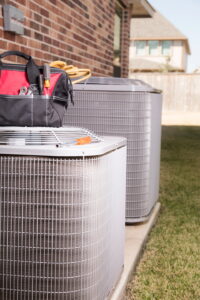If you’re on the hunt for a new central air conditioner in Warsaw, IN, then you’ve probably come across the “SEER” rating. Or, perhaps you’ve even seen the new and improved “SEER2” rating that has been popularized by the Inflation Reduction Act. Either way, this is an important metric that you’re going to need to learn about if you’d like your air conditioner to run as powerfully and efficiently as possible.
SEER stands for seasonal energy efficiency ratio, and it represents a mathematical equation that shows how much space your prospective air conditioner can cool with a given amount of electricity. This means if you’ve got a house of a certain size, and you’d like a system that runs more efficiently, then you should choose a system with a higher SEER rating, as we’ll get into down below.
If math isn’t your strong suit, don’t worry. We’ll keep things simple and you can always call for professional help with this decision.
A Customer’s Guide to SEER
Every time you purchase a new system, whether it’s a high-tech heat pump system or a powerful new central air conditioner, it will have some kind of sticker or piece of paper on it that denotes its SEER or HSPF rating.
If the system doesn’t, for whatever reason, be sure to ask your local professional about why and see if they can provide one to you that gives you the specifics on this system.
This tag or sticker is important, because it means a lot when evaluating the efficiency and longevity of an air conditioner. For instance, if an old AC unit in a house you just bought is still working, but you’re not sure how ancient it is–check the SEER sticker! AC systems made over a decade ago will have SEER ratings of 8-10, while newer ones will have ratings of 14 and up. Some systems even have SEER ratings beyond 20, which means you could practically double your efficiency by replacing that system with a new one!
The Science Behind the SEER Rating
So what is the SEER rating? It’s a complex equation that customers don’t necessarily need to know about, but if you’re curious–here it is.
The SEER rating is equal to the cooling output during the summer divided by the energy used during the same season. Remember, air conditioners take electricity and cool the air, so the higher the SEER rating, the more air is being cooled for less electricity.
The Difference Between HSPF and SEER
Heat pumps run all year round, and they don’t necessarily cool the whole time. This means they need a different metric for their heating and cooling, even if it’s the same process. This is where the HSPF rating comes in.
This is the heating seasonal performance factor, and it’s basically the same equation just used for heating during the fall or winter instead of the summer. A heat pump with a higher HSPF rating will run more efficiently and be more expensive–but worth the extra cost.
For more information, or for a new AC unit, schedule with Collier’s Heating & Air Conditioning. Colliers—A company you’ve grown to trust.

